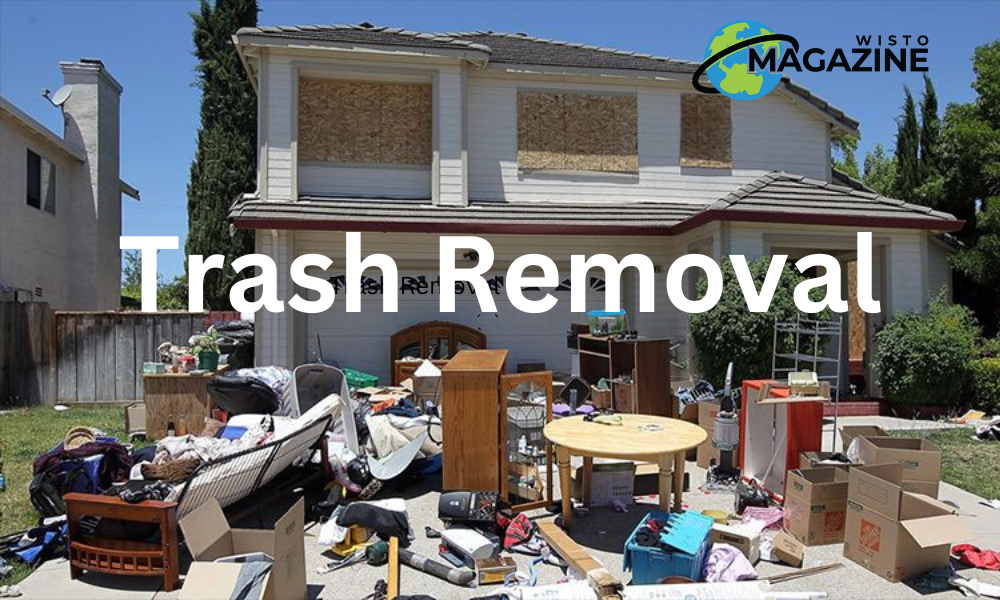In the hustle and bustle of modern life, the significance of efficient trash removal often goes unnoticed. Yet, behind the scenes, this seemingly mundane task plays a crucial role in maintaining the cleanliness of our surroundings, safeguarding public health, and preserving the environment.
From residential neighborhoods to bustling metropolises, effective waste management systems are the unsung heroes of urban sustainability. In this article, we delve into the importance of streamlined trash removal processes and explore innovative solutions for a cleaner, greener future.
The Hidden Impact of Trash Removal
Trash removal is more than just collecting and disposing of waste; it’s a multifaceted process with far-reaching implications. Efficient waste management systems prevent the accumulation of garbage in public spaces, reducing the risk of pollution and disease transmission. In urban areas, where population density is high, timely removal of trash is essential for maintaining sanitation standards and preventing the spread of pests and pathogens.
Moreover, proper trash removal contributes significantly to environmental conservation efforts. Landfills, the most common destination for municipal waste, pose serious environmental risks, including soil and water contamination, greenhouse gas emissions, and habitat destruction. By diverting recyclable materials from landfills and promoting composting initiatives, effective waste management practices mitigate these adverse impacts, conserving natural resources and reducing carbon footprints.
Challenges in Trash Removal
Despite its importance, trash removal is not without its challenges. In many regions, outdated infrastructure, inadequate funding, and inefficient collection methods hinder the optimization of waste management processes. Rapid urbanization exacerbates these issues, placing immense strain on existing sanitation systems and necessitating innovative solutions to meet growing demands.
Furthermore, the global waste crisis underscores the urgency of addressing unsustainable consumption patterns and promoting waste reduction strategies. The prevalence of single-use plastics, excessive packaging, and disposable goods exacerbates waste generation, posing a significant challenge to trash removal efforts worldwide. Addressing these systemic issues requires a holistic approach that prioritizes waste prevention, reuse, and recycling alongside traditional collection and disposal methods.
Innovative Solutions for Sustainable Waste Management
To tackle the complexities of modern waste management, innovative solutions are essential. Technology plays a pivotal role in optimizing trash removal processes, enhancing efficiency, and reducing environmental impact. Smart waste management systems leverage sensors, data analytics, and machine learning algorithms to optimize collection routes, monitor bin capacities, and identify areas with high waste generation rates. By streamlining operations and minimizing resource consumption, these technologies enable municipalities to achieve cost savings while enhancing service quality.
Community engagement and public education are equally crucial aspects of sustainable waste management. Empowering citizens to participate in recycling programs, adopt eco-friendly consumption habits, and reduce waste at the source fosters a culture of environmental stewardship and collective responsibility. Educational initiatives targeting schools, businesses, and local communities raise awareness about the importance of proper waste disposal and the benefits of recycling, driving behavioral change and fostering a sense of environmental consciousness.
Moreover, decentralized waste management approaches offer promising alternatives to centralized collection systems. Community-based composting initiatives, neighborhood recycling hubs, and incentivized waste sorting programs empower individuals and local organizations to take ownership of their waste streams, promoting resource recovery and circular economy principles at the grassroots level. By decentralizing waste management infrastructure and promoting localized solutions, communities can reduce transportation emissions, minimize landfill reliance, and enhance resilience to disruptions in supply chains.
The Path Forward: Towards a Circular Economy
As we navigate the complexities of waste management in the 21st century, a paradigm shift towards a circular economy is imperative. A circular economy model aims to minimize waste and maximize resource efficiency by designing out waste, keeping products and materials in use, and regenerating natural systems. By embracing principles of reduce, reuse, and recycle, stakeholders across sectors can collaborate to create a closed-loop system where waste becomes a valuable resource rather than a disposable liability.
Innovations such as product redesign, extended producer responsibility schemes, and collaborative consumption models are key enablers of the circular economy transition. By reimagining the way we design, produce, and consume goods, we can eliminate waste at its source, minimize environmental harm, and create new economic opportunities. From eco-friendly packaging materials to modular product designs that facilitate repair and refurbishment, sustainable innovation holds the key to unlocking the full potential of a circular economy.
Conclusion
Efficient trash removal is the cornerstone of urban sustainability, encompassing a range of activities that safeguard public health, preserve natural resources, and mitigate environmental pollution. By addressing the challenges of waste management through innovative solutions, communities can transform their approach to waste from a liability to an asset, paving the way for a cleaner, greener future.
Through collective action, technological innovation, and a commitment to circular economy principles, we can build resilient waste management systems that promote prosperity for people and the planet alike.

